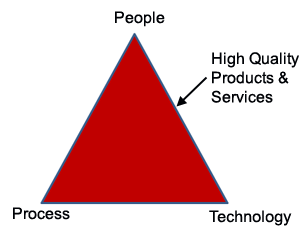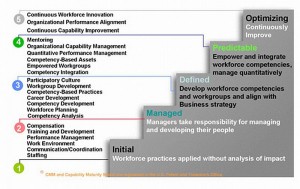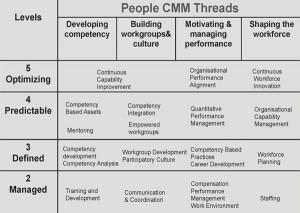Warning: Illegal string offset 'title' in /usr/www/users/playsn/pibold/wp-content/plugins/table-of-content/plugin.php on line 48
Warning: Cannot assign an empty string to a string offset in /usr/www/users/playsn/pibold/wp-content/plugins/table-of-content/plugin.php on line 48
Warning: Illegal string offset 'title-tag' in /usr/www/users/playsn/pibold/wp-content/plugins/table-of-content/plugin.php on line 50
Warning: Illegal string offset 'title-tag' in /usr/www/users/playsn/pibold/wp-content/plugins/table-of-content/plugin.php on line 52
Warning: DOMDocument::loadXML(): Opening and ending tag mismatch: hr line 5 and body in Entity, line: 6 in /usr/www/users/playsn/pibold/wp-content/plugins/wordpress-amazon-associate/APaPi/AmazonProduct/Result.php on line 149
Warning: DOMDocument::loadXML(): Opening and ending tag mismatch: body line 5 and html in Entity, line: 7 in /usr/www/users/playsn/pibold/wp-content/plugins/wordpress-amazon-associate/APaPi/AmazonProduct/Result.php on line 149
Warning: DOMDocument::loadXML(): EndTag: '</' not found in Entity, line: 8 in /usr/www/users/playsn/pibold/wp-content/plugins/wordpress-amazon-associate/APaPi/AmazonProduct/Result.php on line 149
Warning: Invalid argument supplied for foreach() in /usr/www/users/playsn/pibold/wp-content/plugins/wordpress-amazon-associate/APaPi/AmazonProduct/Result.php on line 160
Warning: DOMDocument::loadXML(): Opening and ending tag mismatch: hr line 5 and body in Entity, line: 6 in /usr/www/users/playsn/pibold/wp-content/plugins/wordpress-amazon-associate/APaPi/AmazonProduct/Result.php on line 149
Warning: DOMDocument::loadXML(): Opening and ending tag mismatch: body line 5 and html in Entity, line: 7 in /usr/www/users/playsn/pibold/wp-content/plugins/wordpress-amazon-associate/APaPi/AmazonProduct/Result.php on line 149
Warning: DOMDocument::loadXML(): EndTag: '</' not found in Entity, line: 8 in /usr/www/users/playsn/pibold/wp-content/plugins/wordpress-amazon-associate/APaPi/AmazonProduct/Result.php on line 149
Warning: Invalid argument supplied for foreach() in /usr/www/users/playsn/pibold/wp-content/plugins/wordpress-amazon-associate/APaPi/AmazonProduct/Result.php on line 160
Warning: DOMDocument::loadXML(): Opening and ending tag mismatch: hr line 5 and body in Entity, line: 6 in /usr/www/users/playsn/pibold/wp-content/plugins/wordpress-amazon-associate/APaPi/AmazonProduct/Result.php on line 149
Warning: DOMDocument::loadXML(): Opening and ending tag mismatch: body line 5 and html in Entity, line: 7 in /usr/www/users/playsn/pibold/wp-content/plugins/wordpress-amazon-associate/APaPi/AmazonProduct/Result.php on line 149
Warning: DOMDocument::loadXML(): EndTag: '</' not found in Entity, line: 8 in /usr/www/users/playsn/pibold/wp-content/plugins/wordpress-amazon-associate/APaPi/AmazonProduct/Result.php on line 149
Warning: Invalid argument supplied for foreach() in /usr/www/users/playsn/pibold/wp-content/plugins/wordpress-amazon-associate/APaPi/AmazonProduct/Result.php on line 160
Warning: DOMDocument::loadXML(): Opening and ending tag mismatch: hr line 5 and body in Entity, line: 6 in /usr/www/users/playsn/pibold/wp-content/plugins/wordpress-amazon-associate/APaPi/AmazonProduct/Result.php on line 149
Warning: DOMDocument::loadXML(): Opening and ending tag mismatch: body line 5 and html in Entity, line: 7 in /usr/www/users/playsn/pibold/wp-content/plugins/wordpress-amazon-associate/APaPi/AmazonProduct/Result.php on line 149
Warning: DOMDocument::loadXML(): EndTag: '</' not found in Entity, line: 8 in /usr/www/users/playsn/pibold/wp-content/plugins/wordpress-amazon-associate/APaPi/AmazonProduct/Result.php on line 149
Warning: Invalid argument supplied for foreach() in /usr/www/users/playsn/pibold/wp-content/plugins/wordpress-amazon-associate/APaPi/AmazonProduct/Result.php on line 160
Overview
[Top]
The People Capability Maturity Model (People CMM, P-CMM, PCMM) is part of the CMMI product family of process maturity models. It is a framework to guide organizations in improving their processes for managing and developing human workforces. It helps organizations to characterize the maturity of their workforce practices, establish a program of continuous workforce development, set priorities for improvement actions, integrate workforce development with Process Improvement, and establish a culture of excellence. PCMM is based on proven practices in fields of human resources, knowledge management and organizational development.
People CMM
[Top]
PCMM is part of the CMMI product family of process maturity models. It describes a progression for continuous improvement and process improvement of the HR processes for managing and developing human workforces. The PCMM framework enables organizations to incrementally focus on key process areas and to lay foundations for improvement in workforce practices. Unlike other HR models, PCMM requires that key process areas, improvements, interventions, policies and procedures are institutionalized across the organization — irrespective of function or level. Therefore, all improvements have to percolate throughout the organization, to ensure consistency of focus, to place emphasis on a participatory culture, embodied in a team-based environment, and encouraging individual innovation and creativity. The process maturity rating is from ad hoc and inconsistently performed practices, to a mature and disciplined development of the knowledge, skills, and motivation of the work force. Traditionally, process maturtity models like ISO/IEC 15504 or CMMI focus on organizational improvement with respect to operational (Product) Development Processes. PCMM in contrast focus instead on the three prominent factors for operational capability to deliver successfuly products and services:
- People
- Process
- Products, Technology
 Thus, these 3Ps of PCMM are comparable to ITIL’s 4Ps: People, Processes, Products (tools and technology) and Partners (suppliers, vendors and outsourcing organisations). PCMM is characterised by a holistic approach to people-related issues. Instead of looking at traditional Human Resource interventions in a reactionary scrappy fashion. The PCMM framework enables organizations to incrementally focus on key process areas and to lay foundations for improvement in workforce practices. Unlike other HR models, PCMM requires that key process areas, improvements, interventions, policies and procedures are institutionalized across the organization — irrespective of function or level. Therefore, all improvements have to percolate throughout the organization, to ensure consistency of focus, to place emphasis on a participatory culture, embodied in a team-based environment, and encouraging individual innovation and creativity.
Thus, these 3Ps of PCMM are comparable to ITIL’s 4Ps: People, Processes, Products (tools and technology) and Partners (suppliers, vendors and outsourcing organisations). PCMM is characterised by a holistic approach to people-related issues. Instead of looking at traditional Human Resource interventions in a reactionary scrappy fashion. The PCMM framework enables organizations to incrementally focus on key process areas and to lay foundations for improvement in workforce practices. Unlike other HR models, PCMM requires that key process areas, improvements, interventions, policies and procedures are institutionalized across the organization — irrespective of function or level. Therefore, all improvements have to percolate throughout the organization, to ensure consistency of focus, to place emphasis on a participatory culture, embodied in a team-based environment, and encouraging individual innovation and creativity.
PCMM Maturity Levels
[Top]
Like other staged maturity models of the CMMI Product family]) developed at the Software Engineering Institute (SEI) at Carnegie-Mellon University, the PCMM consists of maturity levels that establish successive foundations for continuously improving workforce competencies. These range from initial (Level 1), where workforce practices are performed inconsistently or ritualistically and frequently fail to achieve their intended purpose, to the optimised level (Level 5), where everyone in the organization is focused on continuously improving their Capability and the organization’s workforce practices.
The five maturity levels of the People CMM are:
- Initial.
- Repeatable. The key process areas at Level 2 focus on instilling basic discipline into workforce activities. They are:
- Work Environment
- Communications
- Staffing
- Performance Management
- Training
- Compensation
- Defined. The key process areas at Level 3 address issues surrounding the identification of the organization’s primary competencies and aligning its people management activities with them. They are:
- Knowledge and Skills Analysis
- Workforce Planning
- Competency Development
- Career Development
- Competency-Based Practices
- Participatory Culture
- Managed. The key process areas at Level 4 focus on quantitatively managing organizational growth in people management capabilities and in establishing competency-based teams. They are:
- Mentoring
- Team Building
- Team-Based Practices
- Organizational Competency Management
- Organizational
- Performance Alignment
- Optimizing. The key process areas at Level 5 cover the issues that address continuous improvement of methods for developing competency, at both the organizational and the individual level. They are:
- Personal Competency Development
- Coaching
- Continuous Workforce Innovation
Further Readings
[Top]
- PCMM – SEI homepage
- Version 2 of the PCMM — PDF [2362 KB]
- Bill Curtis: The Outlines & Highlights for People CMM – A Framework for Human Capital Management. Academic Internet Publ, Dezember 2010.
- Bill Curtis, William E. Hefley, Sally A. Miller: The People CMM – A Framework for Human Capital Management (SEI Series in Software Engineering). Addison-Wesley Longman, Amsterdam, 2009.






Leave a Reply